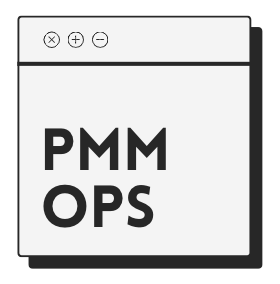I’ve been doing product marketing for over 10 years. In that time, I’ve seen the role evolve in ways I couldn’t have imagined when I started. New tools, new channels, new expectations—PMM is always changing. But nothing, and I mean nothing, has shaken things up like AI.
AI isn’t just another trend or shiny object; it’s a fundamental shift in how we work. It’s changing how we research, create, and connect with our audiences. And while that might sound intimidating, I’m here to tell you it’s also incredibly exciting.
Over the past year, I’ve been diving headfirst into AI—learning how it works, testing tools, and figuring out what it means for product marketers like us. The good news? AI isn’t here to replace us. It’s here to help us work smarter, move faster, and be even more creative.
In this post, I’m going to share everything you need to know about AI as a product marketer—what it is, why it matters, and how you can start using it today. Let’s get to it.
AI 101: What Even Is AI?
Artificial Intelligence, or AI, is technology that mimics human intelligence. It learns from data, adapts, and performs tasks faster (and often better) than we can. Think of AI as a brainy sidekick that can process millions of data points, make predictions, and even get creative—all in the time it takes you to grab a coffee.
In product marketing, AI isn’t some abstract concept. It’s a toolset you can use to save time, gain insights, and sharpen your strategies. From automating tasks to personalizing experiences, AI is like a Swiss Army knife for marketers.
Why Should Product Marketers Care About AI?
Let’s break it down:
- Efficiency Boost: AI automates repetitive tasks like email segmentation, reporting, and campaign optimization. Say goodbye to busywork and hello to strategic thinking.
- Customer Understanding: AI analyzes mountains of customer data and distills it into actionable insights—helping you understand what your audience really wants.
- Hyper-Personalization: Create messages that feel tailor-made for every customer, at scale. AI-powered personalization goes way beyond using a first name in an email.
- Smarter Decisions: Predictive analytics and trend forecasting mean you’re always one step ahead. No more guessing games.
- Competitive Advantage: Your competitors are already experimenting with AI. Don’t let them leave you in the dust.
AI Use Cases for Product Marketers
Here’s where it gets exciting. AI isn’t just a nice-to-have; it’s a game-changer across all aspects of your job. Let’s go through some examples:
1. Market Research
- AI Tools: GPT-based platforms, trend analysis software
- Use It For: Identifying emerging trends, analyzing customer sentiment, or summarizing industry reports.
- Example: Use AI to scan competitor reviews and surface patterns—like which features their customers love or hate.
2. Messaging and Positioning
- AI Tools: ChatGPT, Jasper, Copy.ai
- Use It For: Drafting first-pass messaging, brainstorming campaign ideas, or testing taglines.
- Example: Plug in your value proposition and let AI suggest variations for different customer personas.
3. Campaign Optimization
- AI Tools: Google Ads AI, Meta’s Advantage+ campaigns
- Use It For: Automating A/B tests, optimizing ad spend, or predicting campaign performance.
- Example: AI can identify which ad creatives perform best for specific audience segments and auto-adjust your spend accordingly.
4. Personalization at Scale
- AI Tools: Dynamic content platforms like Persado or Optimove
- Use It For: Creating personalized emails, product recommendations, or landing pages.
- Example: An eCommerce platform uses AI to recommend different products to users based on their browsing behavior.
5. Competitive Analysis
- AI Tools: Data scraping tools, sentiment analysis software
- Use It For: Tracking competitor pricing, messaging shifts, or customer reviews.
- Example: AI flags when a competitor launches a new feature or shifts its messaging strategy.
6. Sales Enablement
- AI Tools: Gong, Chorus
- Use It For: Analyzing call transcripts for trends, crafting killer sales scripts, or automating battle cards.
- Example: AI highlights which product benefits resonate most in sales conversations.
7. Forecasting and Planning
- AI Tools: Predictive analytics platforms like Tableau or Looker (with AI integrations)
- Use It For: Predicting customer churn, planning product launches, or forecasting revenue impact.
- Example: AI predicts the optimal timing for your product launch based on seasonal trends.
The Must-Have AI Tools for Product Marketers
Here’s a cheat sheet of tools to get you started:
- Content Creation: Jasper, ChatGPT, Writesonic
- Analytics: Looker, Tableau, Google Analytics 4 (with AI-driven insights)
- Ad Optimization: Google Ads AI, Meta Advantage+
- Customer Insights: Qualtrics, Salesforce Einstein
- Personalization: Dynamic Yield, Optimizely
Pro tip: Start small. Test a tool on one specific task or campaign before diving in headfirst.
AI Pitfalls to Avoid
AI is powerful, but it’s not perfect. Here’s what to watch out for:
- Over-Automation: Don’t let AI replace your judgment. It’s a tool, not a decision-maker.
- Data Dependence: AI is only as good as the data you feed it. Garbage in, garbage out.
- Missing the Human Touch: AI can help you scale, but great marketing still requires empathy, creativity, and a deep understanding of your audience.
How to Get Started with AI
- Experiment: Pick one area—like copywriting or customer insights—and test an AI tool.
- Learn: Take a course on AI for marketers (Google offers free ones!).
- Integrate: Once you’re comfortable, explore how AI can work across your workflows.
Final Thoughts: The Future Is Here
AI isn’t just a trend—it’s the new normal. For product marketers, learning how to use AI is no longer optional; it’s essential. The tools are here, the possibilities are endless, and the sooner you embrace them, the better positioned you’ll be to lead in this new era of marketing.
So go ahead. Dive in. Play around. And remember: the best marketers aren’t afraid to adapt—they thrive on it.

